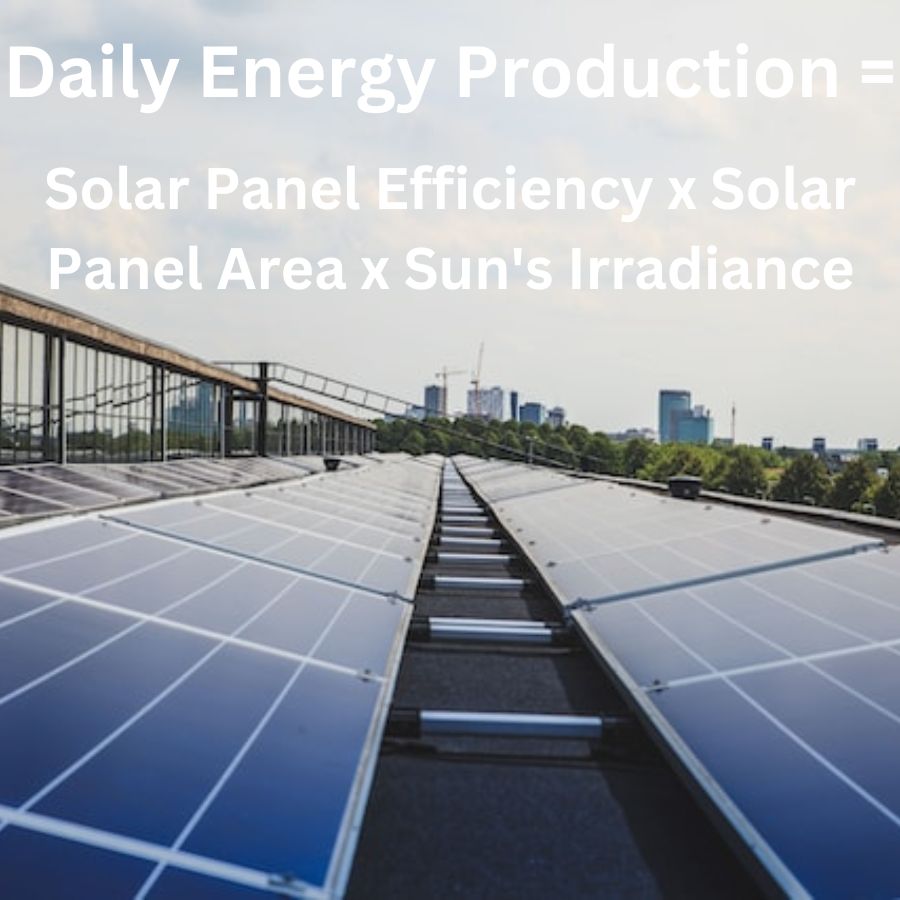Harnessing the sun’s power through solar panels has emerged as a sustainable and cost-effective solution to meet our growing energy needs. Furthermore, as more individuals and businesses turn to solar power, understanding the potential energy output of a solar panel becomes crucial.
Accurately calculate solar panel output if you are considering installing solar panels or seeking to optimize the performance of an existing system. First, the calculation is a fundamental step towards maximizing efficiency and reaping the benefits of this renewable energy source.
How Do You Determine Solar Output?
Determining the solar panel output involves assessing how much electricity solar panels can produce under specific conditions. Moreover, it allows us to gauge the system’s capability to generate clean energy. It also helps size the solar installation accordingly.
By understanding how to calculate solar panel output, you can make informed decisions regarding the number of PV panels required, system design, and expected energy production.
This step-by-step guide aims to demystify the process of calculating solar panel output. In addition, it equips you with the necessary knowledge to evaluate the solar energy potential of your location. Each step will comprehensively analyze your solar panel output. These steps include gathering essential information about your PV panels and geographical location and factoring in efficiency degradation and system losses.
By the end of this guide, you will clearly understand how many solar panels you may need, the expected solar panel output, and the factors influencing energy production. Let’s embark on this journey to unlock the full potential of solar power. In addition, it will help in making informed decisions about harnessing the sun’s energy efficiently.
How to Calculate Solar Panels Output?
Step 1 – Gather the Necessary Information
To accurately calculate solar panel output, the first step is to gather essential information about your solar system and the installation’s geographical location. Besides, this information will serve as the foundation for determining the potential energy production. It also optimizes the performance of your solar power panels.
A. Determine Solar Panel Specifications
First, identify the specifications of your solar panels. Two critical parameters to consider are the wattage rating and the efficiency rating. The wattage rating refers to the maximum power output the solar panels can provide under standard test conditions.
It is in watts (W) or kilowatts (kW). On the other hand, the efficiency rating indicates how effectively the PV panels convert sunlight into electricity. You get it as a percentage, with higher values indicating greater efficiency.
B. Identify Geographical Location
The geographical location of your solar panel installation significantly impacts the solar energy potential. Two critical pieces of information to gather are the latitude and longitude of the installation site. Latitude determines the position of your location relative to the Earth’s equator and affects the angle at which sunlight strikes the PV panels throughout the year.
Step 2 – Calculate Daily Energy Production
A. Understanding the Sun’s Irradiance
The sun’s irradiance, which refers to the intensity of solar radiation reaching the Earth’s surface, is a crucial factor in determining the energy production of PV panels. It also fluctuates throughout the day, and atmospheric conditions, cloud cover, and the sun’s position influences it.
B. Accounting for Panel Orientation and Tilt Angle
Optimizing your solar panels’ orientation and tilt angle is essential for maximizing their efficiency and power output. Ideally, solar panels produce enough power when facing south (in the Northern Hemisphere) or north (in the Southern Hemisphere) as they receive maximum sunlight exposure. One should adjust the tilt angle based on your location’s latitude to ensure optimal energy production throughout the year.
C. Calculating Daily Energy Production Formula
To calculate the daily energy production of your solar panels, you can use the following formula:
Daily Energy Production = Solar Panel Efficiency x Solar Panel Area x Sun’s Irradiance

In this formula, the PV panel efficiency represents the percentage of sunlight the panels can convert into electricity. The solar panel area is the total surface area of your solar panels.
Step 3 – Determine Monthly Energy Production
A. Considering Seasonal Variations
When calculating the energy production of solar panels, it’s essential to account for seasonal variations. Sunlight availability and intensity vary throughout the year due to changes in the Earth’s tilt and the resulting angle at which sunlight reaches the solar panels. Furthermore, seasonal variations impact the amount of energy the solar panel produces each month.
B. Understanding Average Daily Solar Radiation
Understanding each month’s average daily solar radiation is crucial to determine the monthly energy production. Average daily solar radiation reflects the amount of solar energy received per unit area over a day. It considers factors such as cloud cover, atmospheric conditions, and the sun’s angle.
C. Multiplying Daily Energy Production by Days in the Month
To calculate the monthly energy production, multiply the daily energy production (which we determined in Step 2) by the number of days in the month. It accounts for the varying length of months throughout the year.
Step 4 – Assess Annual Energy Production
A. Accounting for Yearly Variations in Solar Radiation
In addition to seasonal variations, it’s crucial to consider yearly variations in solar radiation. Factors such as climate patterns, atmospheric conditions, and variations in sunlight intensity can impact the overall energy production of PV panels over a year.
B. Calculating Monthly Energy Production for All Months
To assess the annual energy production:
- Calculate the energy production for each month using the methodology described in Step 3.
- Consider the average daily solar radiation, multiply it by the number of days each month, and determine the energy production for that period.
- Repeat this calculation for all twelve months to obtain the monthly energy production values.
C. Summing Up Monthly Energy Production Values
To determine the annual energy production, sum up the monthly energy production values calculated for each month. Add the energy production values for all twelve months to obtain the total energy output of your solar panel system over a year.
Step 5 – Accounting for Efficiency Degradation
A. Recognizing Gradual Degradation of PV Panel Efficiency
Over time, solar panels may experience a gradual degradation in their efficiency. Factors such as exposure to sunlight, temperature variations, and environmental conditions can contribute to this degradation. It’s essential to recognize that the efficiency of PV panels may decrease slightly each year.
B. Determining Degradation Rate
To account for efficiency degradation, determine the degradation rate of your PV panels. This rate represents the average annual decrease in efficiency over the panels’ lifespan. One can obtain it from the manufacturer’s specifications or through performance data provided by the panel manufacturer.
C. Adjusting Annual Energy Production for Degradation
To adjust the annual energy production for degradation, multiply the calculated yearly energy production by a degradation factor. This factor is calculated by subtracting the degradation rate from 1 (to represent the remaining efficiency) and multiplying it by itself for each year of operation. Apply this factor to the annual energy production for each year to account for the gradual decline in solar panel efficiency.
Step 6 – Assessing Final Solar Panel Output
A. Calculating Net Energy Production
To determine the net energy production of your solar system, deduct the degradation-adjusted energy production (Step 5) from the annual energy production calculated in Step 4. This calculation accounts for the long-term efficiency degradation of a solar panel.
B. Interpreting the Final Power Output Value
After accounting for system losses and efficiency degradation, the final power output value represents your solar panel system’s estimated net energy production. It provides a more accurate assessment of the energy your solar panels should generate annually. This value is crucial for evaluating your solar investment’s financial and environmental benefits and determining the system’s performance and payback period.
Conclusion – How to Calculate Solar Panel Output
In conclusion, accurately calculating solar panel power output is crucial for understanding the energy production potential of solar systems. Following the step-by-step guide outlined in this article, you can determine solar cell panels’ daily, monthly, and annual energy production. Considering seasonal variations, system losses, and efficiency degradation allows for a more realistic estimation of the net energy output.
Understanding the capabilities of your solar panels, in terms of the energy they can produce, helps optimize the system through solar panel size. In addition, it helps assess financial returns and make informed decisions about harnessing the power of solar energy. Embracing solar power and leveraging the full potential of solar panel systems contribute to a sustainable and renewable energy future.



Leave a Reply